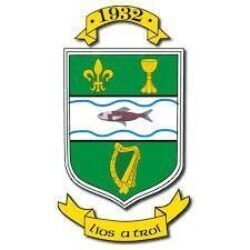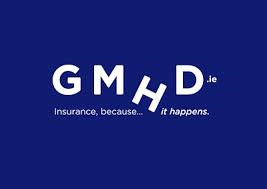 The unofficial coat of arms of Listry GAA Club was adopted in 1998, the Blazon,
The unofficial coat of arms of Listry GAA Club was adopted in 1998, the Blazon,
or technical heraldic description is as follows:
Tierced per fess vert argent and vert, on the fess a salmon proper between two lines wavy azure, between in dexter chief a Fleur De Lis or. in sinister chief a chalice of the same and in base a harp of the same.
The shield is basically made up of the green and white of Listry, but also includes the green and gold of Kerry.
The 2 wavy lines and the Salmon represent the two rivers of the parish. The Laune and the Gweetin, the Salmon also represents knowledge, there were at least two hedge Schools in the parish at Faha and Rockfield.
The Chalice refers to the fact that the parish has supplied two Bishops of Kerry, Aenas O’Leyne (Lyne) from Lissivane
who was Vicar Apostolic or acting Bishop from 1700 to c1709,
And Cornelius Egan from Knocknaman from 1824 to 1856.
It also stands for the Chalice made for Fr Thaddeus Moriarty (who was later martyred in Killarney on October 15th 1653) by Charles Sugrue, which is now in the possession of the Dominicans in Tralee, The Sugrues were smiths to the McCarthy Mor at Rosnacartan.
The Fleur De Lis refers to the fact that many men from the parish including several of the ferrises of Ballymalis Castle and the Falveys of Faha Court, and presumably dozens of others, were members of the Irish Brigade in the French Army.
At one stage the Brigade was getting 80% of its recruits from Kerry, Two Ferrises and two Falveys are listed as Officers
at the Battle of Fontanoy in 1745, and it may be assumed that there were others from the Parish among the private soldiers, whose names are not given.
The Harp stands, not only for Irish Music and Culture, but also for the cause of Ireland, and especially for the Allman Brothers Danny and Pat, of Rockfield, both of whom died for Ireland and after whose brother Myles, the Clubs pitch is named.
1932 is the year that the club was founded. The motto “Listry no longer sleeps” is a phrase that has been associated with the parish since the end of the 1800s, when it appeared on a banner at the time of the Parnalite split.
With Thanks and Gratitude to
James C O’Shea



